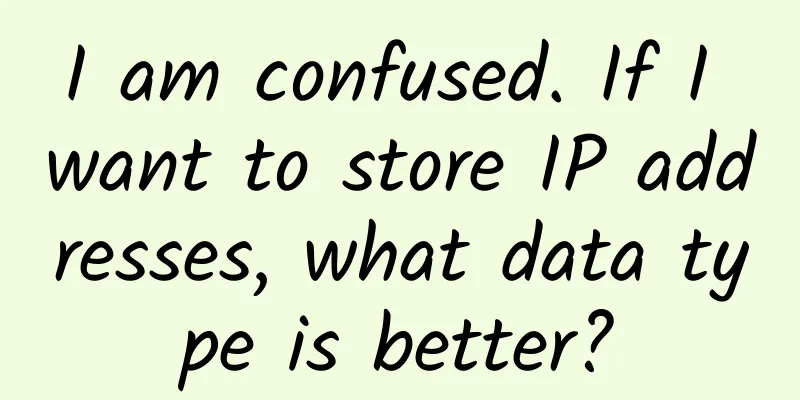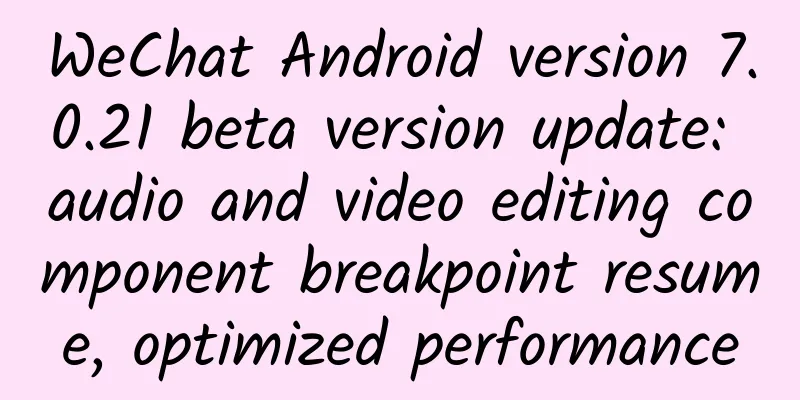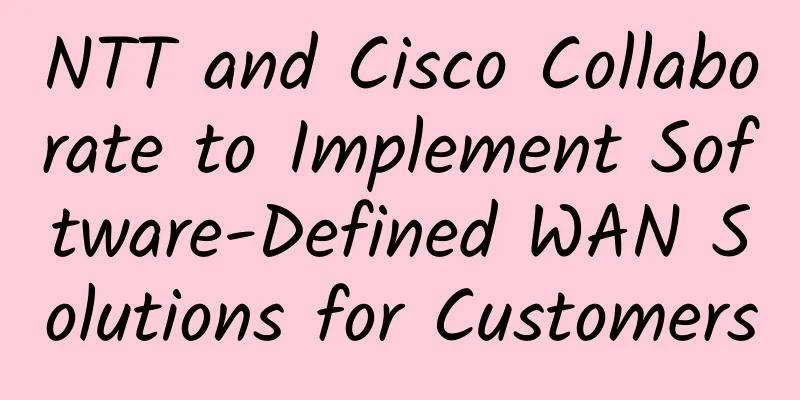I am confused. If I want to store IP addresses, what data type is better?

|
When it comes to IP addresses (IPv4), common IP addresses such as 192.168.0.1 and 127.0.0.1 will immediately come to mind. Then, considering the question "What data type is used to store IP addresses in MySQL?", the char string type will be used. The interviewer looked indifferent, and you immediately realized that something was wrong and thought about it carefully. Then I found that the length of this IP address varies. The shortest can be 0.0.0.0, which only requires 7 bits, and the longest can be 255.255.255.255, which requires 15 bits. So I confidently answered to use varchar(15) to store the IP address, and secretly delighted myself that I could think of this. Unexpectedly, the interviewer smiled contemptuously and asked you "Are you sure?" You thought that the interviewer was testing you, so you answered firmly "Yes". Then we started the next question ...... People often use varchar(15) columns to store IP addresses, but this is not the optimal solution. The essence of an IP address is a 32-bit unsigned integer. The dotted decimal string format like 192.168.0.1 is just to help people understand and remember. The decimal representation of 192.168.0.1 is the unsigned integer 3232235521. Therefore, when people say that IP addresses are stored in string type, they actually subconsciously think that IP addresses are strings and store dotted decimal strings, but the correct method is to store 32-bit unsigned integers. The so-called signed number actually uses the highest bit as the sign bit. For example, for a 32-bit signed INT, the highest bit is the sign bit, and the remaining 31 bits are the actual value. Therefore, the value range of a signed INT is: The value range of unsigned INT is: The following table lists the signed and unsigned value ranges of various integer types in MySQL. When defining a table, you can add the keyword UNSIGNED after the data type to define an unsigned integer, otherwise the default is a signed integer:
Combined with the above table, we can see that a 32-bit unsigned INT can just hold an IPv4 address. The following is a comparison between the two data types: INT UNSIGNED and VARCHAR(15):
MySQL very considerately provides the conversion functions between IPv4 address dotted decimal and unsigned integer, inet_aton and inet_ntoa (the underlying operation is binary shift, which is very fast): Of course, you should perform these conversions in your business to reduce the pressure on MySQL. |
<<: A magical little tool that turns URL addresses into "ooooooooo"
>>: Application of 5G in the Public Sector of Future Smart Cities
Recommend
CMIVPS updated pricing, US/Hong Kong VPS monthly payment starts from US$6/annual payment 30% off
I have shared information about CMIVPS many times...
my country has built a total of 718,000 5G base stations, and the construction plan for next year is still being formulated
According to the China Central Radio and Televisi...
Launchvps: $39.4/year KVM-4GB/80GB/3TB/Philadelphia
Launchvps is a foreign VPS service provider estab...
5G and edge computing are a perfect match
Enterprise IT leaders have heard a lot about edge...
Intelligent connectivity: the convergence of 5G with AI, IoT and AR
Although it is still too early to truly measure t...
5 Things That Can Slow Down Your Wi-Fi Network
Wi-Fi networks can be slow due to the use of olde...
Double your O&M efficiency! What you need to know about the Ansible Copy module
In automated operation and maintenance, file dist...
The challenges of 5G have just begun
The COVID-19 outbreak that has ravaged the world ...
In the new communications era, what opportunities and challenges does video compression technology face?
With the development of communication technology,...
Analysis of Python's new string format vulnerability
Preface This article conducts an in-depth analysi...
Will the withdrawal of 2G network affect you?
I remember in 2018, my father's mobile phone ...
Inventory of digital industry keywords in 2017
2017 will soon be a thing of the past, but there ...
Self-intelligent network, intent-driven?
Hello everyone, I am Jun Qiu. In this issue, we w...
New infrastructure accelerates digital transformation and network security requires the principle of "three non-dependence"
Since the beginning of this year, as the real eco...









